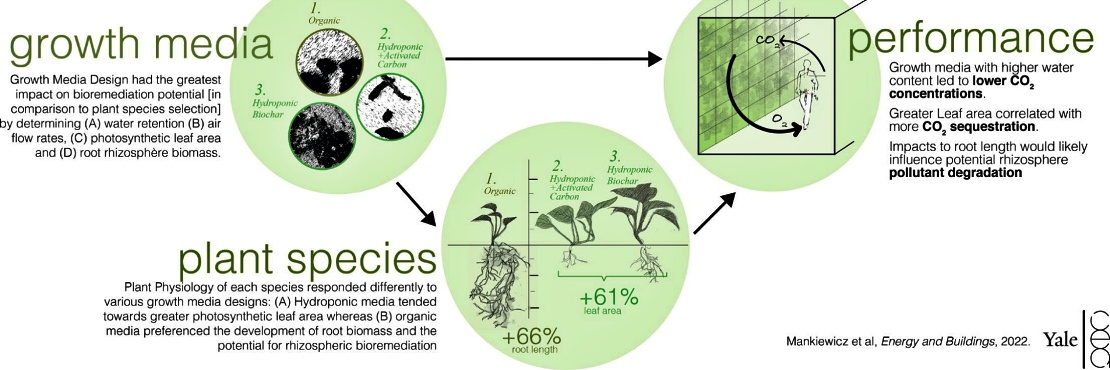Elizabeth Hénaff of NYU Tandon writes:
While air-pollution related deaths are strongly associated with a person’s age and their country of origin’s economic status, poor indoor air quality correlates to health impacts ranging from transient symptoms such as difficulty concentrating and headaches, to chronic, more serious symptoms such as asthma and cancer, in both developing and developed nations.
Air pollution “is the biggest environmental risk to [human] health” according to the World Health Organization.
Emerging data indicates that mechanical/physio-chemical air handling systems inadequately address common indoor air quality problems, including elevated CO2 levels and volatile organic compounds (VOCs), with compounding negative impacts to human health. In this new study, the researchers extend Hénaff’s preliminary work suggesting that active plant-based systems may address these challenges.
The researchers investigated relationships between plant species choice, growth media design (hydroponic versus organic), and factors of design-related performance such as weight, water content, and air flow rate through growth media. The team studied these variables in relation to CO2 flux under low levels of light such as one might find in indoor lighting environments. The proposed methodology was designed to improve upon the methods of previous studies.
Across the species, hydroponic media produced 61% greater photosynthetic leaf area compared to organic media which produced 66% more root biomass. The investigators measured CO2 concentration changes driven by differing plant and growth media (organic vs. hydroponic) treatments within a semi-sealed chamber.
The results of this experiment point to two critical considerations:
- First, growth media selection should be considered a primary design criterion, with potentially significant implications for the ultimate CO2 balance and biological function of installations, especially as it relates to patterns of plant development and water availability.
- Secondly, influxes of CO2 concentrations during the initiation of active air flow and early plant development may have to be accounted for if the patterns of measured CO2 fluxes are found to persist at scale. In the context of active air flow systems and indoor air pollutant bioremediation (CO2 included), relative rates of CO2 production and sequestration as they relate to potential VOC remediation rates become critical for short term indoor air quality and implications for heating, ventilation and A.C. energy use.
This research was led by Elizabeth Hénaff, Assistant Professor in the Department of Technology, Culture, and Society department with collaborators from Yale University.
Read more: Developing design criteria for active green wall bioremediation performance
 Greenroofs.comConnecting the Planet + Living Architecture
Greenroofs.comConnecting the Planet + Living Architecture





